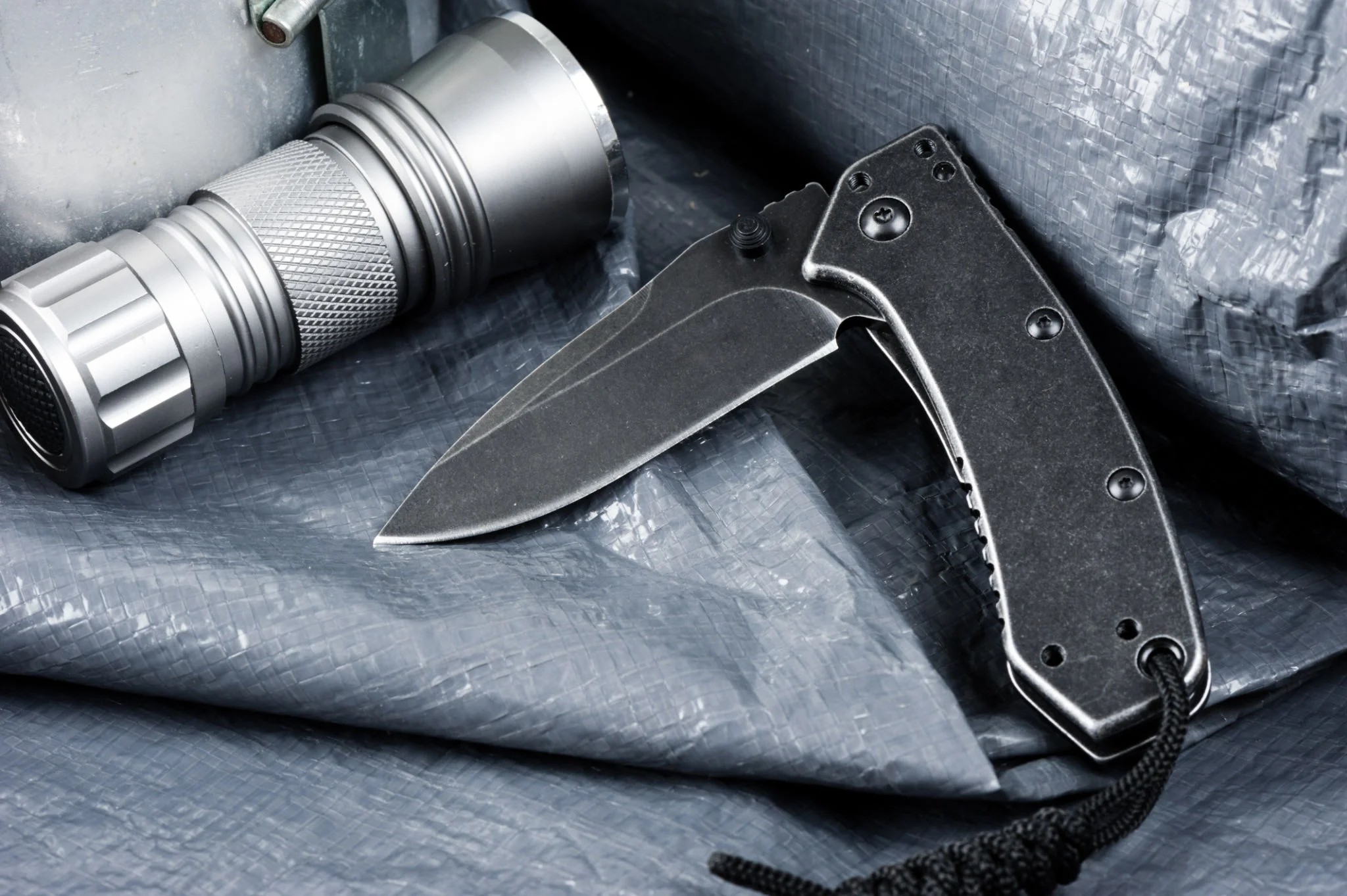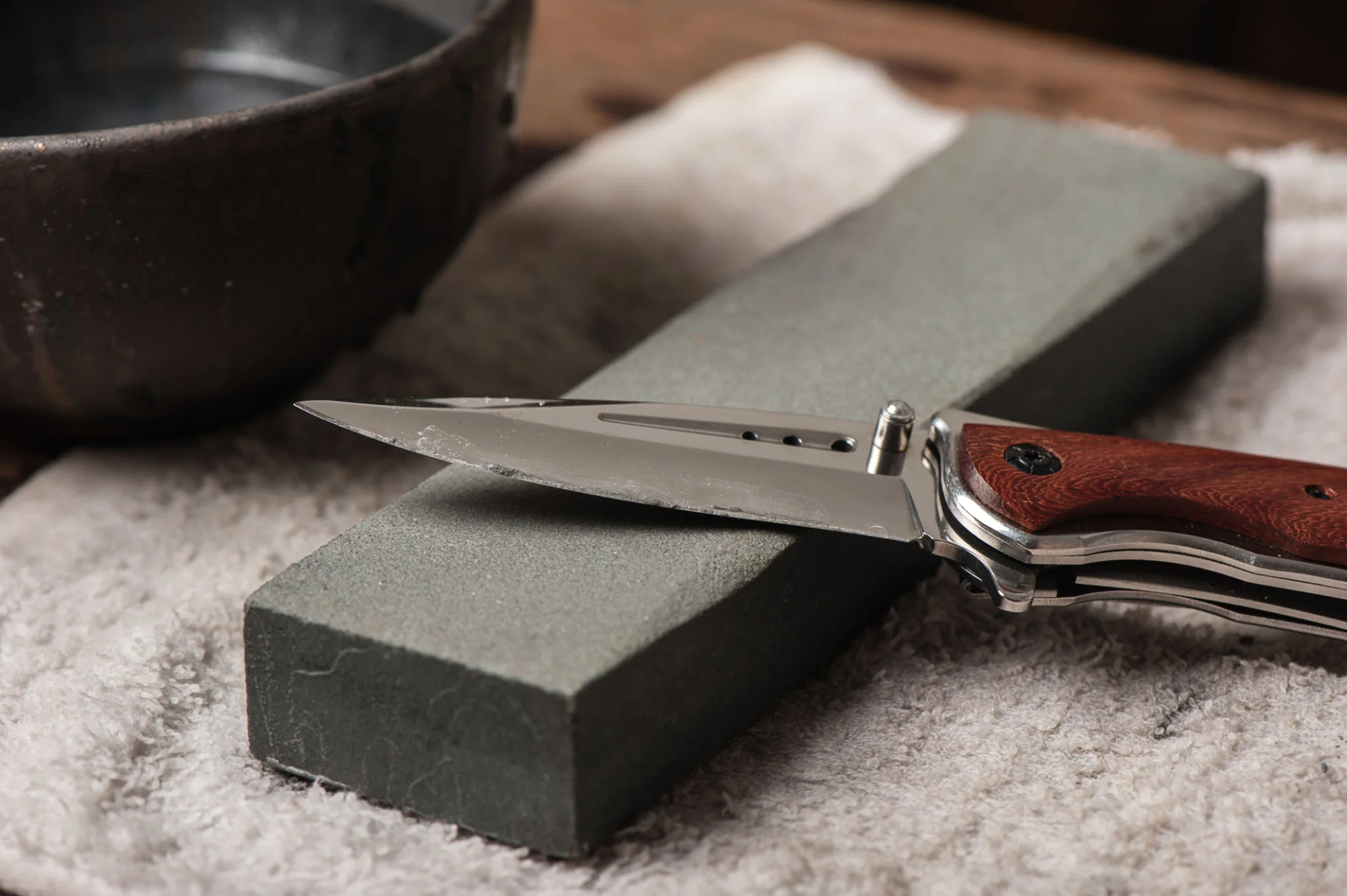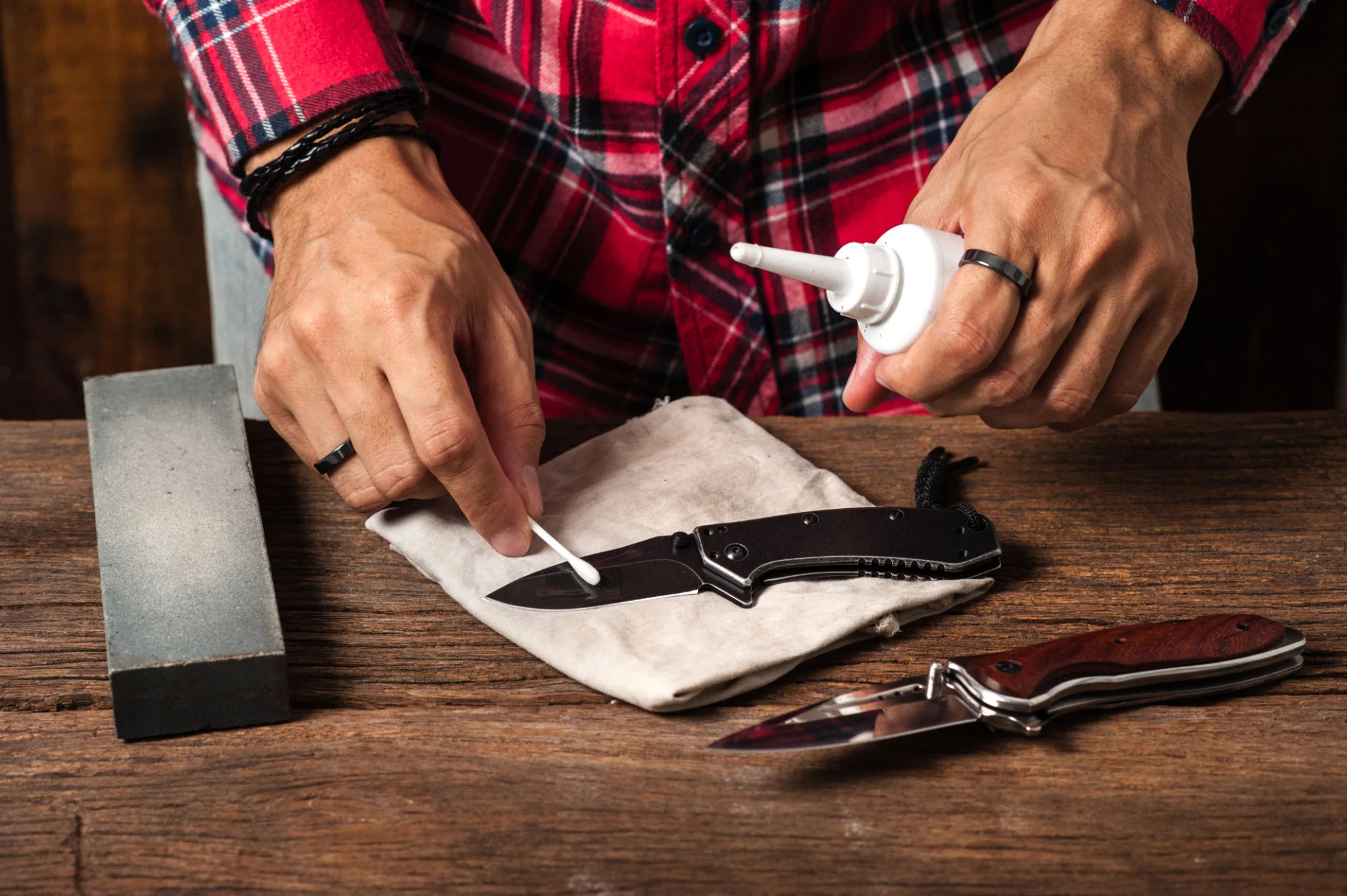A folding fishing knife is an essential tool for any angler, combining convenience, versatility, and functionality. Proper maintenance ensures the longevity and performance of your knife. Here are some comprehensive tips for maintaining your folding fishing knife.
Key Takeaways
- Clean Regularly: Rinse and dry your knife after each use to prevent rust and corrosion.
- Deep Clean Periodically: Occasionally disassemble, soak in soapy water, scrub, rinse, dry, and reassemble.
- Sharpen Properly: Use sharpening stones or rods to keep the blade sharp. Apply consistent pressure and hone the edge.
- Lubricate Moving Parts: Apply high-quality lubricant to the pivot point and other moving parts. Wipe away excess.
- Store Correctly: Keep your knife in a cool, dry place with a protective cover to prevent damage.
- Inspect Regularly: Check for wear and tighten any loose screws or bolts.
- Prioritize Safety: Wear protective gear, work in a well-lit area, and follow proper techniques.
Cleaning Your Folding Fishing Knife

Regular Cleaning After each use, it’s crucial to rinse your knife with fresh water to remove salt, dirt, or fish residue. Saltwater can cause corrosion, so thorough cleaning is essential. Use mild soap and a soft brush if the knife is particularly dirty. Avoid harsh chemicals or abrasive materials. Always dry the knife thoroughly to prevent rust, paying special attention to the pivot point and other moving parts.
Deep Cleaning: Periodically disassemble your knife for a thorough cleaning. Soak the parts in warm, soapy water to loosen dirt. Scrub each part gently with a soft brush, rinse with fresh water, and dry thoroughly before reassembling.
Sharpening Your Folding Fishing Knife

A sharp blade is crucial for performance and safety, and regular sharpening ensures that your knife remains effective for all fishing tasks.
Choosing the Right Sharpening Tools: Use sharpening stones (whetstones), rods, or electric sharpeners. Sharpening stones are versatile and come in various grits for different sharpening levels, while rods and electric sharpeners offer convenience and consistency.
Sharpening Techniques: Place the blade on the sharpening stone at the appropriate angle (usually 20-25 degrees). Using consistent pressure, draw the blade across the stone from heel to tip—alternate sides to maintain a balanced edge. After sharpening, use a honing rod to refine the edge and remove any burrs. Test the sharpness by cutting through paper or slicing a tomato; a sharp knife should cut smoothly and easily.
Lubricating the Moving Parts
Proper lubrication ensures smooth operation and reduces wear. Use high-quality lubricants designed for knives or tools. Apply a small amount to the pivot point and other moving parts. Close the knife several times to work the lubricant, then wipe away any excess.
Storing Your Folding Fishing Knife
Proper storage prevents damage and maintains your knife’s condition when not in use. Store your knife in a cool, dry place away from direct sunlight and moisture. Use a protective cover or sheath to protect the blade and prevent accidental injuries. Ensure the cover or sheath is clean and dry before storing the knife.
Regular Inspections and Maintenance
Regular inspections help identify potential issues before they become significant problems. Inspect the blade and handle for wear, damage, or corrosion. Address any issues promptly to prevent further damage. Check and tighten any screws or bolts that may have loosened over time.
Safety Practices for Maintaining a Folding Fishing Knife
Safety should always be a priority. Wear protective gloves and eyewear when cleaning, sharpening, or disassembling your knife. Ensure your workspace is well-lit to avoid accidents. Follow proper techniques to prevent accidents and injuries.
Common Mistakes to Avoid
Avoid these common mistakes to ensure proper maintenance:
- Neglecting Regular Cleaning: Failing to clean your knife regularly can lead to dirt, grime, and corrosion buildup.
- Improper Sharpening Techniques: Using incorrect sharpening techniques can damage the blade.
- Over-Lubricating: Using too much lubricant can attract dirt and debris.
- Improper Storage: Storing your knife in damp or humid environments can cause rust and corrosion.
Conclusion
Maintaining a folding fishing knife requires regular cleaning, sharpening, lubrication, and proper storage. By following these tips, you can ensure your knife remains in excellent condition, performs efficiently, and lasts for years. Prioritizing safety and avoiding common maintenance mistakes will help you get the most out of your folding fishing knife. Whether you’re an experienced angler or a novice, proper knife maintenance is essential for a successful and enjoyable fishing experience.
FAQs
How should I clean my folding fishing knife after use?
To clean your folding fishing knife after use:
- Rinse Immediately: Rinse the blade and handle with fresh water immediately after use to remove fish residue, blood, and salt, especially after saltwater fishing.
- Use Mild Soap: Apply mild dish soap to a sponge or cloth and gently scrub the blade and handle. Avoid harsh chemicals that can damage the knife.
- Brush the Pivot Area: Use a soft brush, like an old toothbrush, to clean the pivot area where the blade folds into the handle.
- Dry Thoroughly: Dry the knife completely with a soft cloth to prevent rust and corrosion. Pay special attention to the pivot area.
How do I keep my folding fishing knife sharp?
To keep your folding fishing knife sharp:
- Regular Sharpening: To maintain the blade’s edge, use a sharpening stone or knife sharpener regularly. Follow the manufacturer’s instructions for the best results.
- Proper Angle: Maintain the correct sharpening angle, typically 15 to 20 degrees, to ensure a sharp and durable edge.
- Honing Rod: Use a honing rod between sharpenings to realign the blade edge and maintain its sharpness.
- Avoid Hard Surfaces: Do not cut on hard surfaces like stone or metal, as this can quickly dull the blade. Use a cutting board or other appropriate surfaces.
How can I prevent rust and corrosion on my folding fishing knife?
To prevent rust and corrosion:
- Dry Thoroughly: Always dry the knife thoroughly after cleaning or exposure to moisture.
- Oil the Blade: Apply a light coat of food-safe mineral or knife oil to the blade to create a protective barrier against moisture and rust.
- Store Properly: Store the knife in a dry place, away from humidity. Avoid storing it in leather sheaths for extended periods, as leather can retain moisture.
- Use Stainless Steel: If rust is a significant concern, consider using a knife made from high-quality stainless steel, which is more corrosion-resistant.
How can I maintain the folding mechanism of my knife?
To maintain the folding mechanism:
- Lubricate the Pivot: Apply a few drops of light machine oil or knife-specific lubricant to the pivot area to ensure smooth opening and closing. Wipe off any excess oil.
- Clean Regularly: Remove debris and buildup from the pivot area using a soft brush or compressed air.
- Tighten Screws: Periodically check and tighten any screws on the knife using the appropriate tool. Avoid over-tightening, which can affect the knife’s movement.
What are some general maintenance tips for a folding fishing knife?
General maintenance tips include:
- Inspect Regularly: Regularly inspect the knife for signs of wear, damage, or rust. Address any issues promptly to prevent further damage.
- Use Properly: Use the knife for its intended purpose only. Avoid using it as a pry bar, screwdriver, or for tasks that could damage the blade.
- Handle with Care: Avoid dropping the knife, which can damage the blade and handle. Handle it with care to maintain its condition.
- The knife should be in a safe place where it won’t be damaged or cause injury. An ideal place is a knife case or a designated drawer.
Using these tips to maintain your folding fishing knife will ensure it remains sharp, clean, and functional for many fishing trips to come. Proper care and regular maintenance will extend the life of your knife and enhance your overall fishing experience.

